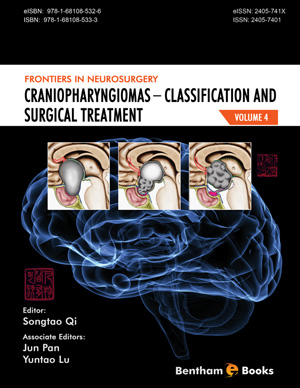Abstract
Craniopharyngioma, an intracranial, extra-axial, epithelial tumor of the sellar or parasellar region that grows along the craniopharyngeal duct, was established in 1904 as a distinct tumor type by the Austrian neuropathologist Jakob Erdheim. Though classified as a Grade I tumor by the World Health Organization, craniopharyngioma can cause significant morbidity through its intimate involvement with and mass effects on surrounding critical structures, including the hypothalamus, pituitary gland, and optic chiasm, and its tendency to recur even after successful therapy. Many extensive and in-depth studies of craniopharyngioma have been conducted; however, during the past century, studies of the genetic and molecular basis of the two major craniopharyngioma subtypes (adamantinomatous and squamous papillary) have been limited because of the benign histology, epidemiological rarity (relative to malignant tumors), and lack of a tumor research platform and technical conditions associated with these lesions. Therefore, consensus remains lacking with respect to the etiology, pathological features, pathogenesis, and biological characteristics of these formidable neoplasms. In this chapter, we reviewed experimental craniopharyngioma research.
Keywords: Craniopharyngioma, EMT, Experimental research, Inflammation, mice model.






















